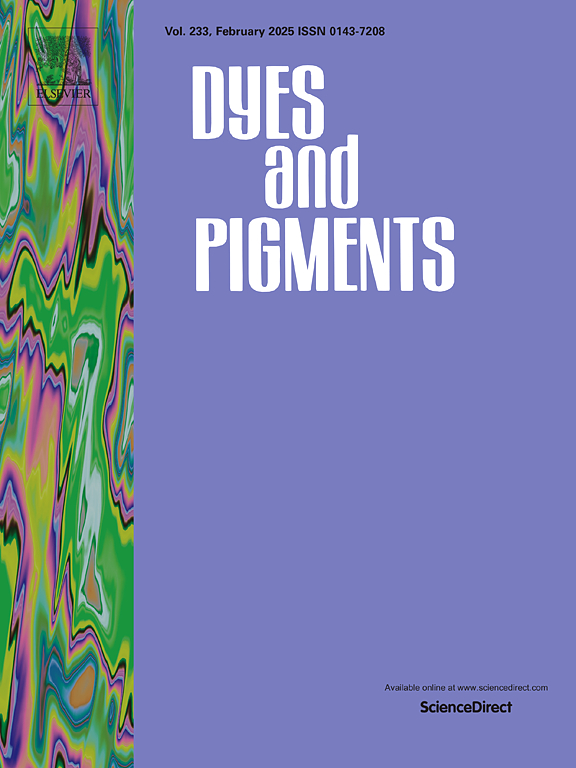Construction of naphthalimide-based near-infrared hemicyanine fluorophore and its application for in vivo bioimaging
IF 4.2
3区 工程技术
Q2 CHEMISTRY, APPLIED
引用次数: 0
Abstract
Near-infrared (NIR) fluorescence imaging (700–1700 nm) has the advantages of deep tissue penetration and low background fluorescence interference, and has shown great application prospects in fields such as life sciences and clinical medicine. Herein, we developed two NIR naphthalimide-hemicyanine fluorophores ML-OH and ML-NH2 by using dye integration strategy. Both of them exhibited near-infrared emission (>700 nm), appropriate photodynamic or photothermal performance, ease of modification, and good biocompatibility. Consequently, activated near-infrared fluorescent probes had been developed: peroxynitrite probe ML-ONOO, hypochlorite probe ML-ClO, protease probe ML-CT, hypoxia responsive probe and prodrug ML-P. Notably, ML-ONOO could effectively monitor changes in ONOO− levels in the body and distinguish between diseased mice and healthy mice. The NIR naphthalimide-hemicyanine fluorophore provided a new platform for identifying and detecting different biomarkers in living systems, providing new tools and methods for the treatment and diagnosis of diseases.

萘酰亚胺基近红外半菁荧光团的构建及其在体内生物成像中的应用
近红外(NIR)荧光成像技术(700 ~ 1700 nm)具有穿透组织深层和低背景荧光干扰等优点,在生命科学和临床医学等领域显示出巨大的应用前景。本文采用染料整合策略,制备了两个近红外萘酰亚胺-半氰基荧光团ML-OH和ML-NH2。这两种材料均具有近红外发射(>700 nm)、良好的光动力或光热性能、易于修饰和良好的生物相容性。为此,开发了活化型近红外荧光探针:过氧亚硝酸盐探针ML-ONOO、次氯酸盐探针ML-ClO、蛋白酶探针ML-CT、缺氧反应探针和前药ML-P。值得注意的是,ML-ONOO可以有效地监测体内ONOO -水平的变化,并区分患病小鼠和健康小鼠。近红外萘酰亚胺-半氰基荧光团为识别和检测生命系统中的不同生物标志物提供了新的平台,为疾病的治疗和诊断提供了新的工具和方法。
本文章由计算机程序翻译,如有差异,请以英文原文为准。
求助全文
约1分钟内获得全文
求助全文
来源期刊

Dyes and Pigments
工程技术-材料科学:纺织
CiteScore
8.20
自引率
13.30%
发文量
933
审稿时长
33 days
期刊介绍:
Dyes and Pigments covers the scientific and technical aspects of the chemistry and physics of dyes, pigments and their intermediates. Emphasis is placed on the properties of the colouring matters themselves rather than on their applications or the system in which they may be applied.
Thus the journal accepts research and review papers on the synthesis of dyes, pigments and intermediates, their physical or chemical properties, e.g. spectroscopic, surface, solution or solid state characteristics, the physical aspects of their preparation, e.g. precipitation, nucleation and growth, crystal formation, liquid crystalline characteristics, their photochemical, ecological or biological properties and the relationship between colour and chemical constitution. However, papers are considered which deal with the more fundamental aspects of colourant application and of the interactions of colourants with substrates or media.
The journal will interest a wide variety of workers in a range of disciplines whose work involves dyes, pigments and their intermediates, and provides a platform for investigators with common interests but diverse fields of activity such as cosmetics, reprographics, dye and pigment synthesis, medical research, polymers, etc.
 求助内容:
求助内容: 应助结果提醒方式:
应助结果提醒方式:


